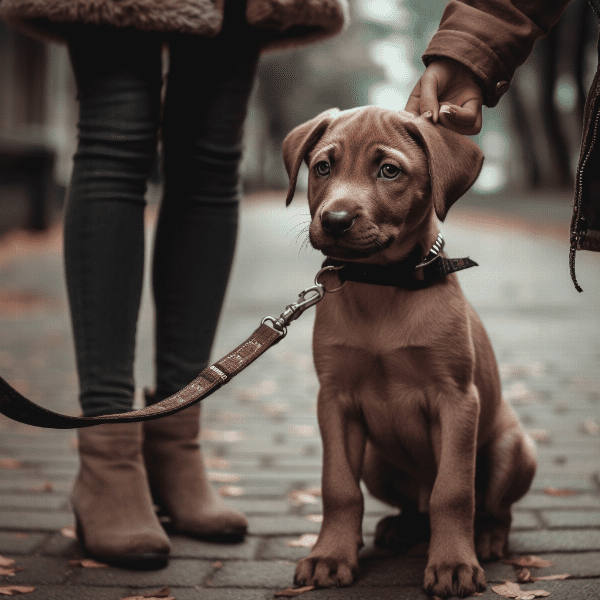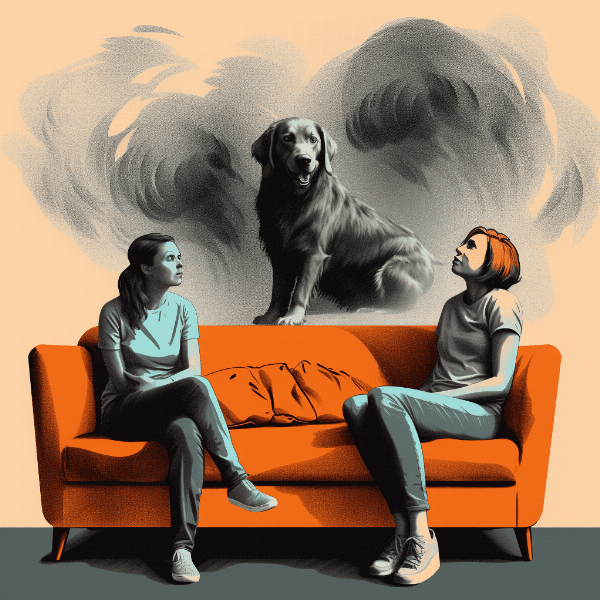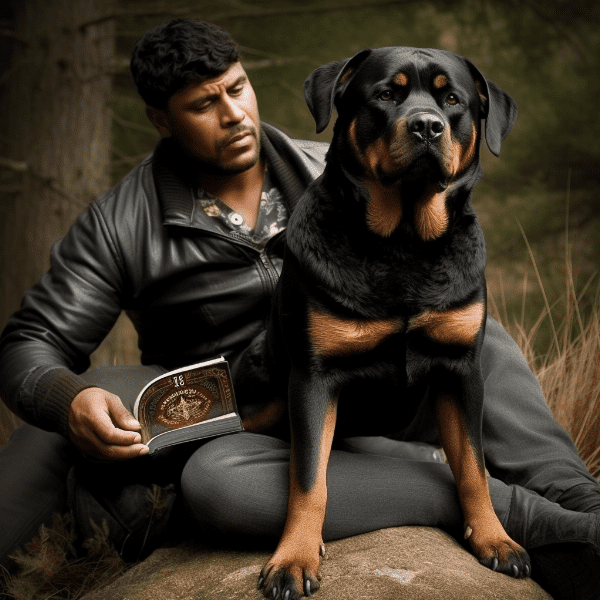Table of Contents
- Why Do Puppies Growl?
- Types of Growling in Puppies
- Body Language Signals Associated with Growling
- When to Be Concerned About Growling
- Tips for Addressing Aggression in Puppies
- Positive Reinforcement Training Methods
- Professional Help for Aggressive Puppies
- Common Mistakes to Avoid When Dealing with Growling
- The Importance of Socialization for Puppies
- Managing Aggression in the Long Term
Why Do Puppies Growl?
Puppies are known for their playful and curious nature, but they can also exhibit behavior that is perceived as aggressive, such as growling. While growling is a natural instinct for puppies, it is important to understand why they do it in order to address the behavior effectively.
Establishing Dominance
One reason why puppies growl is to establish dominance over their surroundings. Puppies may growl to assert their position in the pack or household, especially when they feel their territory or resources are threatened. For instance, if a puppy growls when someone approaches their food bowl, it may be a sign of possessiveness and dominance.
Fear or Anxiety
Another reason why puppies may growl is fear or anxiety. Puppies may growl when they encounter unfamiliar people, animals, or situations that they perceive as a threat. In this case, growling is a defensive mechanism that helps the puppy feel more secure and protected.
Playful Behavior
Sometimes, puppies may growl during playtime. Growling during play is not necessarily a sign of aggression, but rather a way for puppies to communicate with one another. They may growl to initiate play or to signal to their playmate that they are having fun.
Conclusion
In conclusion, puppies growl for a variety of reasons, including establishing dominance, fear or anxiety, and playful behavior. By understanding the underlying reasons behind this behavior, you can address the behavior effectively and help your puppy learn appropriate ways to communicate with others.
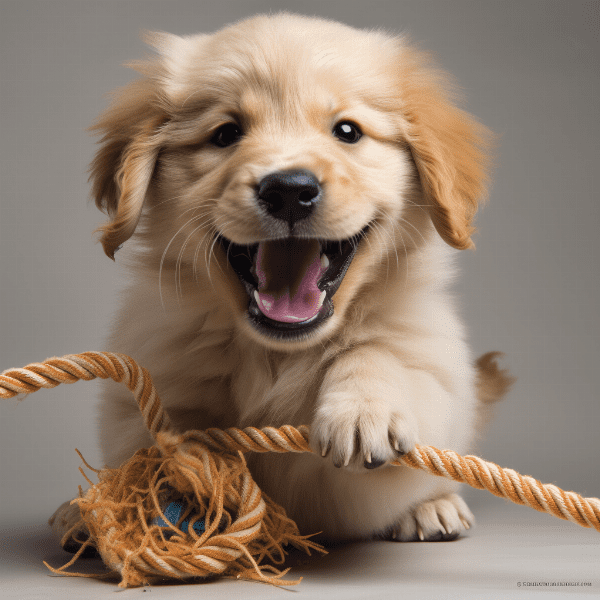
Types of Growling in Puppies
While growling is generally seen as a sign of aggression, it is important to note that not all growls are the same. Understanding the different types of growling in puppies can help you decipher what your puppy is trying to communicate.
Play Growling
Play growling is a common behavior in puppies and is usually accompanied by a relaxed and playful demeanor. This type of growling is often higher-pitched and may be accompanied by a wagging tail, playful barks, and an open mouth. Play growling is a way for puppies to initiate play and communicate that they are having fun.
Fearful Growling
Fearful growling is a defensive behavior that is usually accompanied by body language that shows the puppy is feeling threatened or scared. This type of growling is often low-pitched and may be accompanied by bared teeth, raised hackles, and a stiff body posture. Fearful growling is a warning that the puppy is uncomfortable and may resort to biting if they feel cornered or trapped.
Dominant Growling
Dominant growling is a behavior that is used to assert dominance over a particular resource or situation. This type of growling is often accompanied by a stiff body posture and may be directed towards humans or other animals. Dominant growling is a warning that the puppy is not willing to give up their resources and may become aggressive if provoked.
Pain-Induced Growling
Pain-induced growling is a type of growling that is triggered when the puppy is in pain or discomfort. This type of growling is usually accompanied by body language that shows the puppy is in distress, such as whimpering or hiding. Pain-induced growling is a warning that the puppy is in pain and should be taken to the vet for treatment.
Conclusion
In conclusion, understanding the different types of growling in puppies can help you better interpret their behavior and respond appropriately. While growling is often seen as a sign of aggression, it is important to consider the context and body language that accompanies the behavior to determine what your puppy is trying to communicate.

Body Language Signals Associated with Growling
Puppies communicate not only through vocalizations like growling but also through body language. Understanding the body language signals that accompany growling can help you interpret your puppy’s behavior more accurately.
Stiff Body Posture
When a puppy is growling, they may exhibit a stiff body posture, with their body held tense and still. This posture indicates that the puppy is ready to defend themselves if necessary and is a warning that they may resort to biting if they feel threatened.
Raised Hackles
Raised hackles are a clear indication that a puppy is feeling threatened or defensive. When a puppy is growling, you may notice their fur standing up on their back and shoulders. This is a sign that the puppy is feeling uncomfortable and may resort to aggression if they feel cornered or threatened.
Bared Teeth
When a puppy growls, they may also bare their teeth. This is a clear sign that the puppy is feeling threatened and may resort to biting if necessary. Bared teeth may also be accompanied by a low, rumbling growl, indicating that the puppy is feeling dominant or aggressive.
Relaxed Body Posture
Not all growling is a sign of aggression. When a puppy is growling playfully, they may exhibit a relaxed body posture, with their body loose and wiggly. Playful growling may be accompanied by a wagging tail and an open mouth, indicating that the puppy is having fun and initiating play.
Conclusion
In conclusion, understanding the body language signals that accompany growling can help you interpret your puppy’s behavior more accurately. Stiff body posture, raised hackles, and bared teeth are all signs that a puppy is feeling threatened or defensive. However, relaxed body posture, a wagging tail, and an open mouth may indicate that the puppy is growling playfully and initiating play.
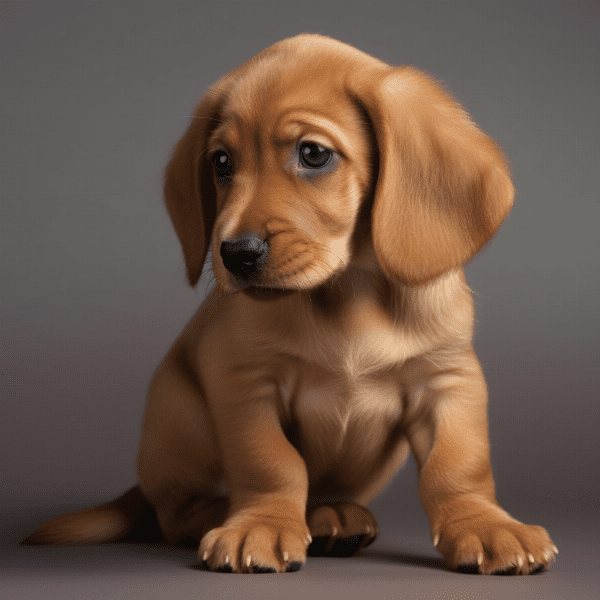
When to Be Concerned About Growling
While growling is a natural behavior for puppies, there are times when it may indicate a more serious issue. Understanding when to be concerned about growling can help you address any underlying problems and prevent aggressive behavior in the future.
Growling at Humans
If your puppy is growling at humans, it is important to take the behavior seriously. This may indicate that your puppy is feeling threatened or uncomfortable around people and may resort to biting if they feel cornered. If your puppy is growling at humans, it is important to seek professional help to address the behavior and prevent any aggressive incidents.
Growling at Other Animals
Growling at other animals is another behavior that should be taken seriously. This may indicate that your puppy is feeling territorial or possessive and may become aggressive towards other animals if they feel threatened. If your puppy is growling at other animals, it is important to supervise their interactions and seek professional help if necessary.
Growling During Routine Activities
If your puppy is growling during routine activities, such as feeding or grooming, this may indicate that they are feeling anxious or uncomfortable with the activity. It is important to address the underlying issue and find ways to make these activities more comfortable for your puppy to prevent any aggressive behavior.
Persistent or Aggressive Growling
Persistent or aggressive growling is a clear indication that your puppy is feeling threatened or uncomfortable. If your puppy is growling persistently or aggressively, it is important to seek professional help to address the behavior and prevent any incidents of aggression.
Conclusion
In conclusion, while growling is a natural behavior for puppies, there are times when it may indicate a more serious issue. If your puppy is growling at humans or other animals, during routine activities, or persistently and aggressively, it is important to take the behavior seriously and seek professional help to address any underlying problems.
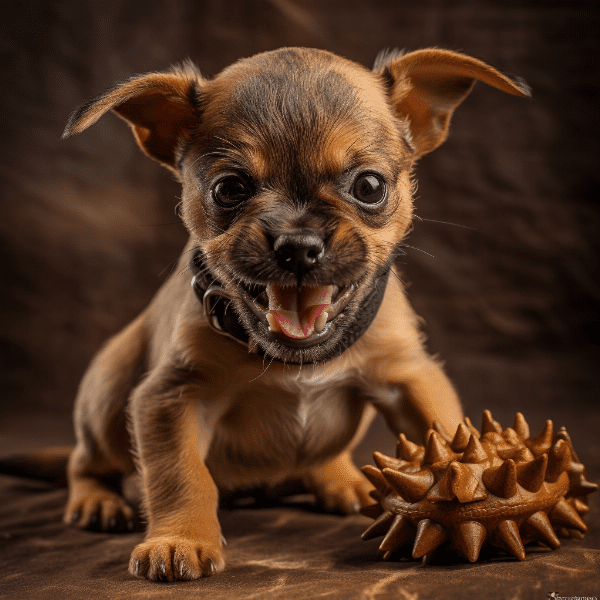
Tips for Addressing Aggression in Puppies
Addressing aggression in puppies can be a challenging task, but with the right approach, it is possible to teach your puppy appropriate behavior and prevent any incidents of aggression in the future. Here are some tips for addressing aggression in puppies:
Start Early
Prevention is always better than cure, so it is important to start addressing aggressive behavior in puppies as early as possible. This includes socializing your puppy with other people and animals and teaching them appropriate behavior from a young age.
Use Positive Reinforcement
Positive reinforcement is an effective way to address aggression in puppies. Rewarding your puppy for good behavior can help them learn what is expected of them and motivate them to repeat the behavior in the future.
Seek Professional Help
If your puppy’s aggressive behavior persists or escalates, it is important to seek professional help. A professional dog trainer or behaviorist can work with you and your puppy to address the behavior and prevent any incidents of aggression in the future.
Be Consistent
Conclusion
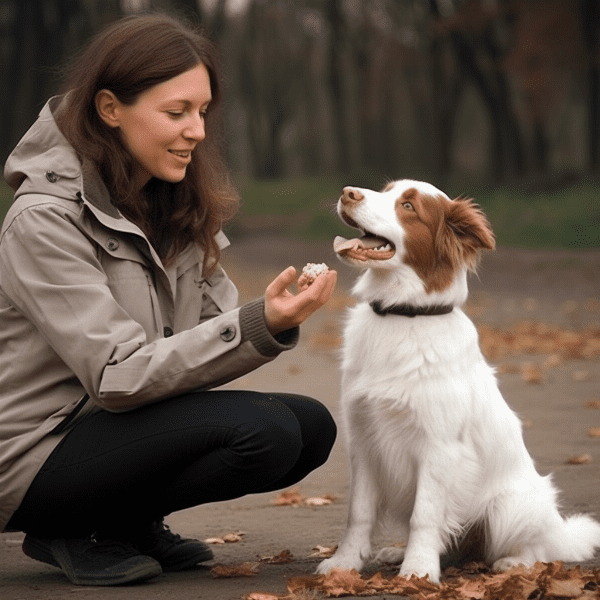
Positive Reinforcement Training Methods
Clicker Training
Clicker training is a form of positive reinforcement that uses a clicker and treats to reward good behavior. When your puppy exhibits good behavior, you click the clicker and give them a treat. This helps your puppy learn what is expected of them and motivates them to repeat the behavior in the future.
Treats and Praise
Treats and praise are simple and effective ways to reinforce good behavior in puppies. When your puppy exhibits good behavior, such as not growling when approached while eating, give them a treat or praise them. This positive reinforcement helps your puppy learn what is expected of them and encourages them to repeat the behavior in the future.
Distraction Techniques
Distraction techniques are a useful way to redirect your puppy’s behavior when they exhibit aggressive behavior. When your puppy starts growling, redirect their attention to something positive, such as a toy or treat. This helps them learn appropriate behavior and prevents any incidents of aggression.
Timeouts
Timeouts are a useful way to address persistent or aggressive behavior in puppies. When your puppy exhibits aggressive behavior, such as growling persistently, remove them from the situation and give them a timeout. This helps your puppy learn that aggressive behavior is not acceptable and encourages them to exhibit appropriate behavior in the future.
Conclusion
In conclusion, positive reinforcement training methods are an effective way to address aggressive behavior in puppies. Clicker training, treats and praise, distraction techniques, and timeouts are all positive reinforcement methods that can help you teach your puppy appropriate behavior and prevent any incidents of aggression.
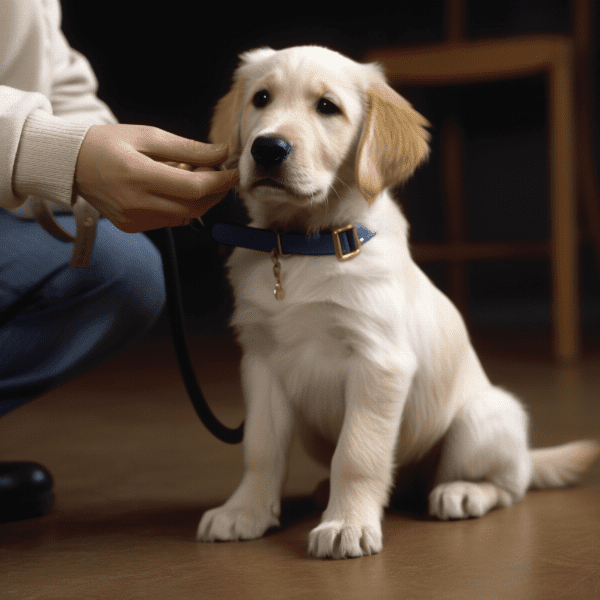
Professional Help for Aggressive Puppies
If your puppy’s aggressive behavior persists or escalates, it may be necessary to seek professional help. Here are some professionals who can help you address your puppy’s aggressive behavior:
Veterinarian
Your veterinarian can help rule out any medical issues that may be causing your puppy’s aggressive behavior. They can also provide guidance on behavior modification techniques and recommend a professional dog trainer or behaviorist.
Dog Trainer
A professional dog trainer can work with you and your puppy to address the aggressive behavior and teach your puppy appropriate behavior. They can also provide guidance on socialization and teach you how to reinforce positive behavior through positive reinforcement training methods.
Dog Behaviorist
A dog behaviorist is a specialist who can diagnose and treat behavior problems in dogs. They can work with you and your puppy to develop a behavior modification plan and teach you how to address your puppy’s aggressive behavior effectively.
Animal Behaviorist
An animal behaviorist is a specialist who can diagnose and treat behavior problems in a variety of animals, including dogs. They can work with you and your puppy to address the aggressive behavior and provide guidance on behavior modification techniques.
Conclusion
In conclusion, if your puppy’s aggressive behavior persists or escalates, it may be necessary to seek professional help. Your veterinarian, a professional dog trainer, a dog behaviorist, or an animal behaviorist can work with you and your puppy to develop a behavior modification plan and teach you how to address your puppy’s aggressive behavior effectively.
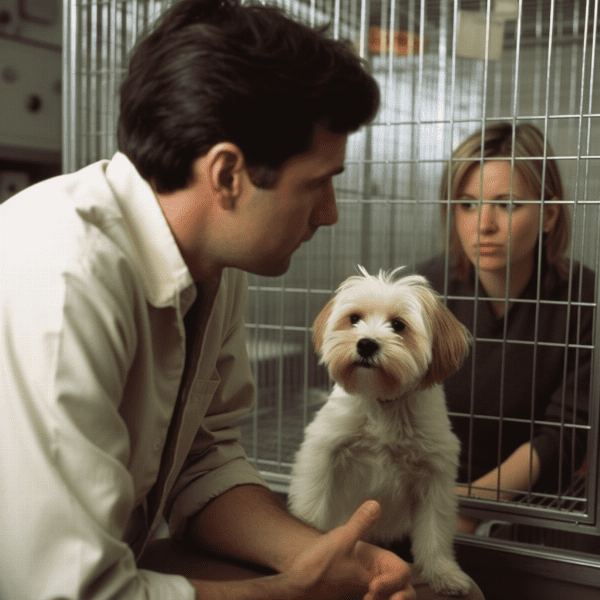
Common Mistakes to Avoid When Dealing with Growling
Dealing with growling in puppies can be a challenging task, and it’s important to avoid common mistakes that can make the problem worse. Here are some common mistakes to avoid when dealing with growling:
Consoling Your Puppy
Consoling your puppy when they are growling may seem like a natural response, but it can actually reinforce the behavior. Consolation can reinforce the idea that growling is an effective way to communicate and may lead to more aggressive behavior in the future.
Using Physical Force
Using physical force to address aggressive behavior in puppies is never appropriate. This can increase anxiety and fear in puppies and may even escalate the aggression. Instead, focus on positive reinforcement and redirecting your puppy’s behavior.
Being Inconsistent
Conclusion
In conclusion, dealing with growling in puppies requires a consistent and positive approach. Avoiding common mistakes like punishing your puppy, ignoring the behavior, consoling your puppy, using physical force, and being inconsistent can help you teach your puppy appropriate behavior and prevent any incidents of aggression in the future.
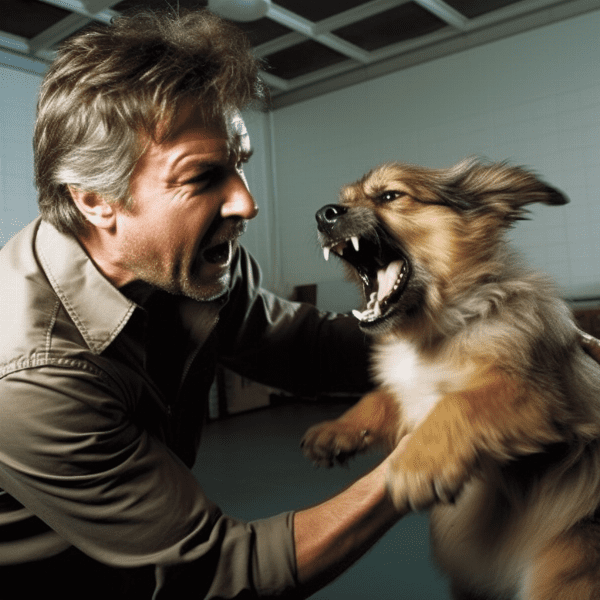
The Importance of Socialization for Puppies
Socialization is a critical aspect of raising a puppy and can help prevent aggressive behavior in the future. Here are some reasons why socialization is important for puppies:
Builds Confidence
Socialization can help build confidence in puppies by exposing them to new experiences and environments. This exposure can help your puppy become more confident and less anxious, which can prevent fear-based aggression in the future.
Improves Communication Skills
Socialization can also improve your puppy’s communication skills by teaching them how to interact with people and animals in a positive way. This can prevent aggressive behavior and help your puppy learn how to communicate their needs effectively.
Establishes a Strong Bond
Socialization can help establish a strong bond between you and your puppy by teaching them to trust and rely on you. This bond can prevent aggressive behavior and make it easier to address any behavior issues that may arise in the future.
Conclusion
In conclusion, socialization is a critical aspect of raising a puppy and can help prevent aggressive behavior in the future. Socialization can prevent fear and anxiety, encourage appropriate behavior, build confidence, improve communication skills, and establish a strong bond between you and your puppy. By socializing your puppy early and consistently, you can help them become a well-behaved and well-adjusted adult dog.
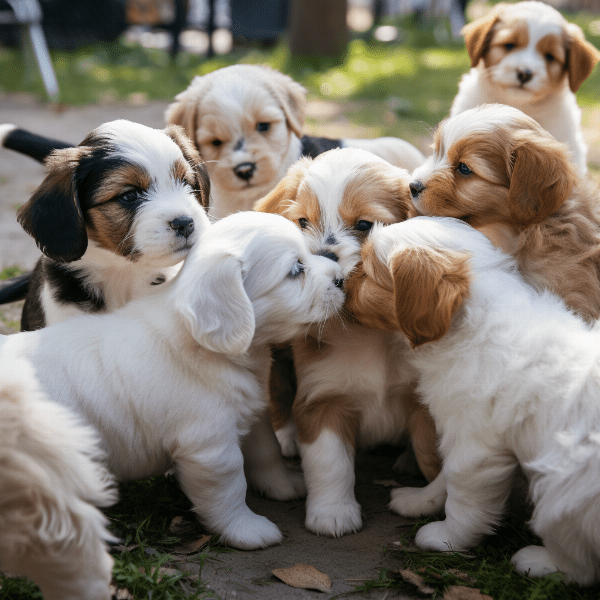
Managing Aggression in the Long Term
Managing aggression in the long term requires a consistent and positive approach to addressing your puppy’s behavior. Here are some tips for managing aggression in the long term:
Continue Socialization
Socialization is an ongoing process, and it is important to continue exposing your puppy to new experiences and environments as they grow older. This can help prevent fear and anxiety and encourage appropriate behavior in different situations.
Practice Consistent Training
Consistent training is key to managing aggression in the long term. Make sure that everyone in your household is on the same page and is using the same techniques to address the behavior. Consistent training can help your puppy learn appropriate behavior and prevent any incidents of aggression.
Monitor Interactions
Monitoring your puppy’s interactions with other people and animals is important to managing aggression in the long term. Supervise any interactions and remove your puppy from any situation that may cause them to become anxious or aggressive.
Address Any Underlying Issues
Aggressive behavior in puppies can be caused by underlying issues, such as fear or anxiety. It is important to address any underlying issues to prevent the behavior from escalating. Seek professional help if necessary to address any underlying problems.
Be Patient
Managing aggression in the long term requires patience and persistence. It may take time for your puppy to learn appropriate behavior, but with consistent training and positive reinforcement, it is possible to teach your puppy appropriate behavior and prevent any incidents of aggression in the future.
Conclusion
In conclusion, managing aggression in the long term requires a consistent and positive approach to addressing your puppy’s behavior. Continuing socialization, practicing consistent training, monitoring interactions, addressing any underlying issues, and being patient can help you teach your puppy appropriate behavior and prevent any incidents of aggression in the future.
